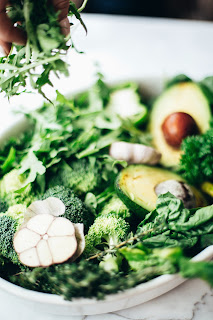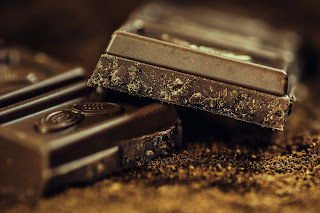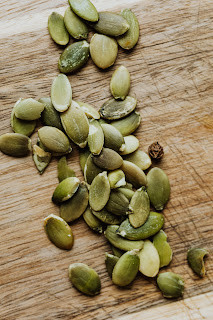Hey there, lovely buddies of Breakfastie!
Welcome back to another blog article. We're going to discuss the most critical topic that needs to be handled as soon as possible. Did you ever wonder why you feel exhausted the rest of the day despite getting plenty of rest and sleep? Have you ever gone from being out of breath after a walk to being out of breath in a very short time? Have you ever found that even after using a body moisturizer, your skin remains dry? Did you pay attention to those details? It's possible that you have anemia or iron deficiency.
In today's post, we'll discuss what is iron deficiency Anemia? The most popular items are Non-meat iron-rich foods. These Non-meat iron-rich foods should be tried by non-vegans. We only knew that red meat, shellfish, normal fish, poultry, and eggs were among the high iron foods. But what if you're following a vegan or vegetarian diet? Is this to say that vegetarians and vegans must be iron-deficient? Definitely not! Vegans and vegetarians can obtain their daily iron fix from non-meat sources.
Let's go over all of that and many more...
What is Iron Deficiency Anemia?
Which veggie came out on top in our poll? When it comes to high iron foods, are potatoes and oats suitable choices? What about quinoa and dark chocolate? All of these topics will be covered, as well as others...
The following is a list of Non-meat Iron-Rich Foods:
- Leafy Green Veggies
- Potatoes
- Oats
- Dark Chocolate
- Quinoa
- Prune Juice
- Mushrooms
- Tomato Paste
- Olives
- Beans and Peas
- Pumpkin Seeds
1. Leafy Green Veggies:
The first Non-meat Iron-Rich foods are leafy green veggies. Your body is unable to produce iron. That is why you must obtain it through your diet. You'll need 8 to 18 milligrams of iron each day as an adult. Pregnant women need a larger amount, almost 30 milligrams per day. Leafy green vegetables are known to be very nutritious. These include vegetables like spinach, kale, and collards. These can give you between 3 and 7 milligrams of iron per cup cooked. That's between 14 and 36% of your body's daily iron needs.
 |
| Green Leafy Veggies |
One cup of cooked chard covers 22% of your daily recommended iron intake to give you a rough idea. The same goes for beet greens. Spinach gives you a little more iron. Which one is your personal favorite? In the comments section below, share your preferences with the Nutritionist Thunder community...
2. Potatoes:
Hey viewer! Are you a potatoes lover? In which form did you like to consume potatoes. Let us know in the comment section area.
Potatoes are an important part of the most common diet all over the world. One benefit of eating potatoes is that they are non-meat Iron-rich foods. However, this iron is mainly found in the skin of the vegetable. An unpeeled potato weighing about 10.5 ounces can provide you with up to 3 milligrams of iron. This equates to about 18% of the iron your body needs daily. If you have sweet potatoes, you get a little less. Approximately 2 milligrams for the same size, which is 12% of your needs.
In addition to iron, potatoes are also packed with fiber. If you eat a serving of potatoes, they can provide you with almost half of the vitamin C and B6 your body needs each day. Are you looking for the most up-to-date health and wellness information? Press the subscribe button and join our health-conscious followers.
Keep up to date with all of our great content from the Nutritionist Thunder community...
3. Oats:
Let’s move on to the third source of non-meat Iron-rich foods which is oats. Oats are very tasty and easy to add to your diet. It's a great source of iron. If you eat one cup of cooked oatmeal, you get 3 to 4 milligrams of iron. This is about 20% of your body's daily needs. Along with iron, oatmeal is a great source of zinc, magnesium, and folic acid. Also contains a soluble fiber called beta-glucan, which helps improve gut health. This fiber may also help lower cholesterol and blood sugar levels.
4. Dark Chocolate:
Dark chocolates are the fourth non-meat Iron-rich food on the planet. Chocolate is not generally considered a healthy food. But actually, this only applies to milk chocolate. Dark chocolate, on the other hand, has more nutrients and also comes with a good amount of iron. You need to make sure the chocolate is at least 70% cacao (kuhcow). For every ounce of dark chocolate, you get up to 3 milligrams of iron. This equates to about 17% of the iron your body needs daily. In addition to fiber, dark chocolate contains magnesium and copper.
 |
| Dark Chocolate |
Dark chocolate is also packed with antioxidants, which can help protect your body from cell damage caused by free radicals. These antioxidants may also help prevent chronic diseases. Dark chocolate can also help regulate the stress hormone cortisol. Did you know before that dark chocolate is iron-rich food? Let us know what you think in the comments section.
5. Quinoa:
The fifth non-meat Iron-rich food we going to discuss is quinoa. Quinoa has recently become a popular breakfast option, thanks to its numerous health benefits. Vitamins, minerals, and protein are abundant in this dish. One cup of cooked quinoa contains up to 3 milligrams of iron, which is around 17% of your daily requirement. Quinoa is also rich in antioxidants, which can help prevent medical diseases such as type 2 diabetes and high blood pressure. Quinoa is gluten-free, which is an added bonus.
6. Prune Juice:
Prune juice is our non-meat Iron-rich food. People who require a soothing effect frequently consume prune juice. It's highly helpful for constipation sufferers. Prune juice also contains a significant amount of iron. As much as 3 milligrams of iron can be found in a cup of prune juice. This means your body will obtain 17% of the iron it needs on daily basis. You'll only get half the iron if you simply eat the prunes for the same period. In addition to iron, prune juice provides other essential elements such as vitamins C and B6, fiber, and potassium.
7. Mushrooms:
Mushrooms are the seventh non-meat Iron-rich food. Even while not all mushrooms are the same, some types are rich in iron. One cup of cooked white mushrooms, for example, can provide as much as 3 milligrams of iron. This corresponds to 17% of your body's daily requirement. You'll receive twice as much iron if you eat oyster mushrooms. When you eat Portobello or shiitake mushrooms, however, you will obtain very little iron.
 |
| Mushrooms |
8. Tomato Paste:
Tomato paste is the eighth-best source of non-meat Iron-rich foods. When you have raw tomatoes, you only obtain a small amount of iron. With dried tomatoes, however, this is not the case. Around 4 milligrams of iron are found in half a cup of tomato paste. This is equal to 22% of your daily requirement. Instead, one cup of tomato sauce will provide you with roughly 2 milligrams of iron. That's half the iron that half a cup of tomato paste would provide. Tomatoes have a variety of nutritional benefits in addition to iron. Vitamin C is abundant in them.
This is significant because vitamin C can aid in the absorption of iron. They also include lycopene, a phytonutrient that protects you from sunburn.
9. Olives:
Olives are our ninth non-meat Iron-rich food. Olives are used in a range of dishes and can also be served as a side dish or a starter. One of the benefits of eating olives is that they provide a great amount of iron. More than 3 milligrams of iron are obtained from 3 to 4 ounces of olives. Olives contain other nutrients such as vitamins A and E, as well as fiber, in addition to iron. They also include a few plant chemicals that can aid in the prevention of heart disease.
10. Beans and Peas:
Born and raised, our parents tried all they could to get us to eat beans and peas. They were correct about the nutritional value of these vegetables, it turns out. Beans and peas are well-known for being non-meat Iron-rich foods. Iron is found in cooked kidney beans, lima beans, and soybeans in amounts ranging from 4 to 7 milligrams per cup. This means you'd obtain anything from 24 to 37 percent of your daily intake. Chickpeas and black-eyed peas have the greatest iron content among peas.
You'll get roughly 5 milligrams of iron from one cooked cup of each of them. This means that your body will get around 29% of the iron it requires each day. Beans and peas, in addition to providing a good source of iron, can also be high in fiber. They're also high in complex carbohydrates and other nutrients like potassium, folate, and manganese. Eating beans and peas has been shown in studies to help lower blood pressure and cholesterol. They can also aid in the reduction of belly fat.
